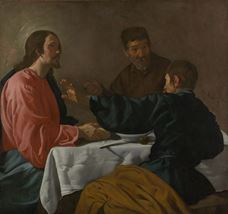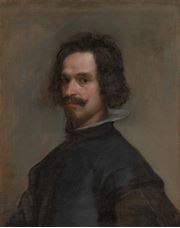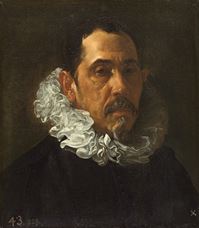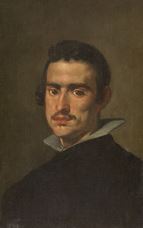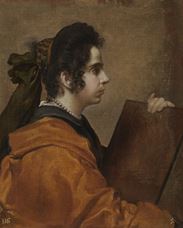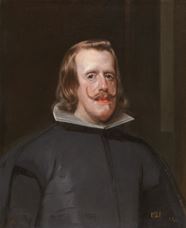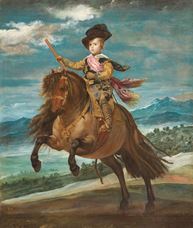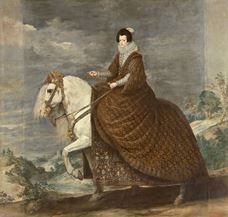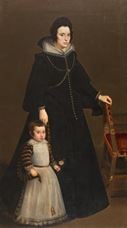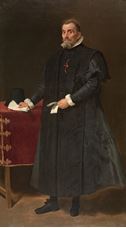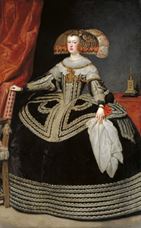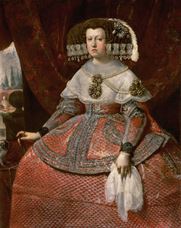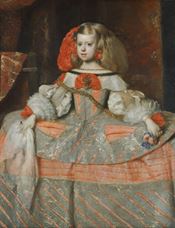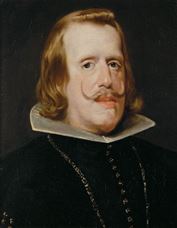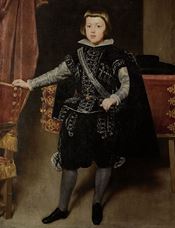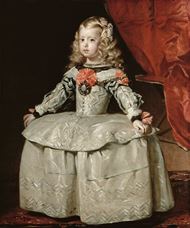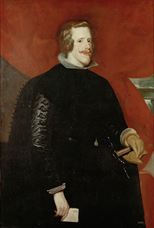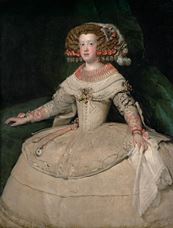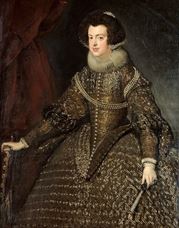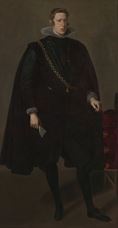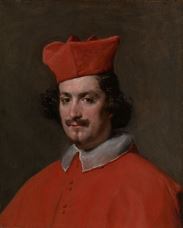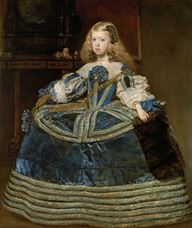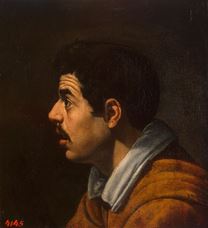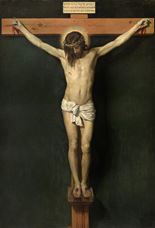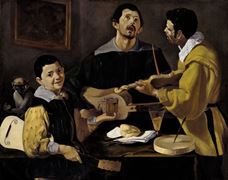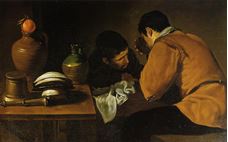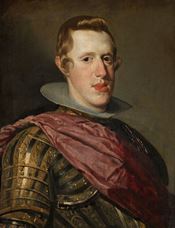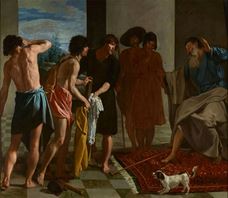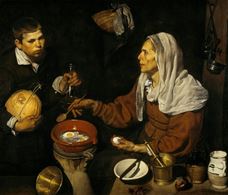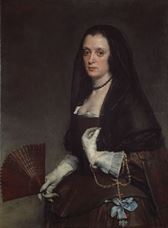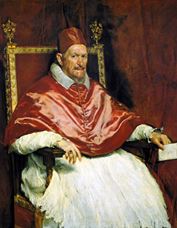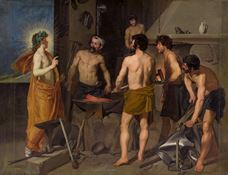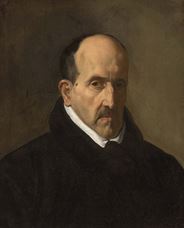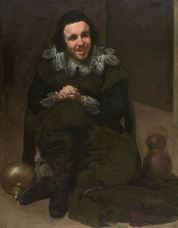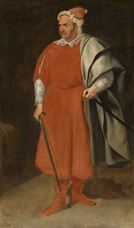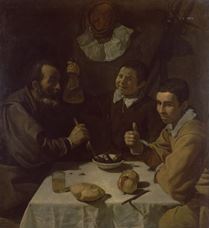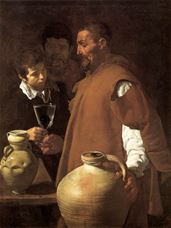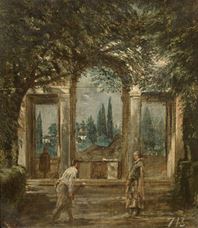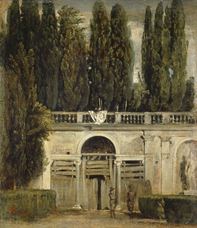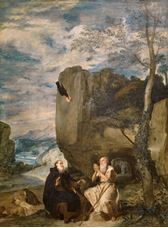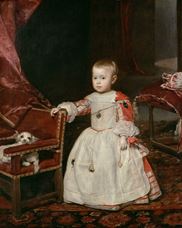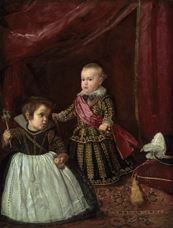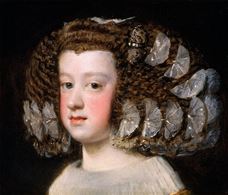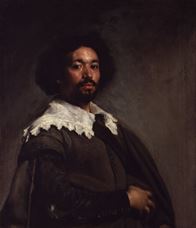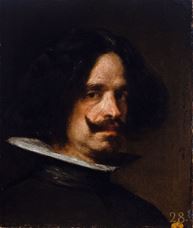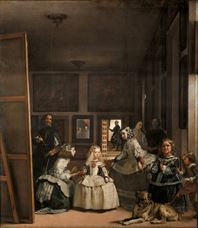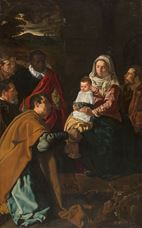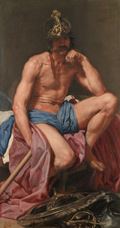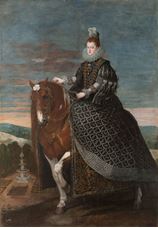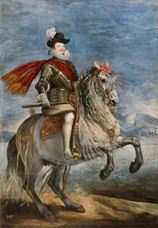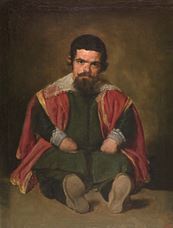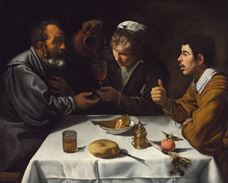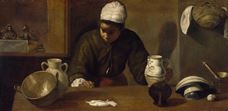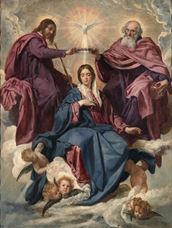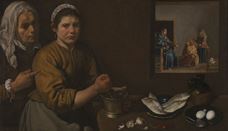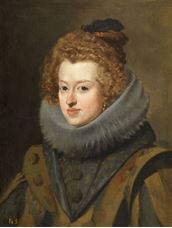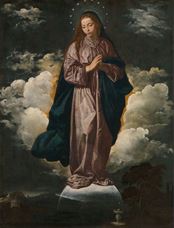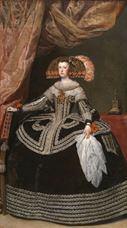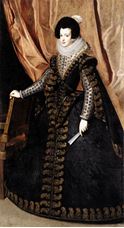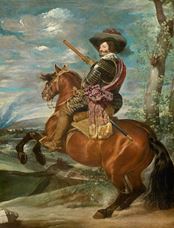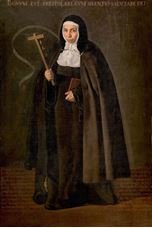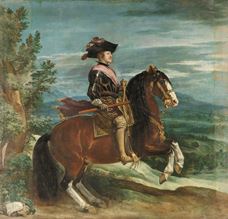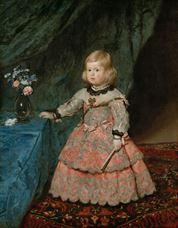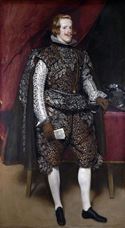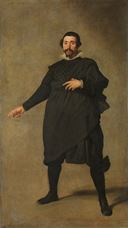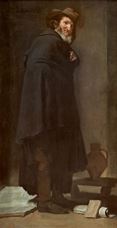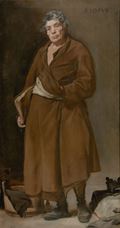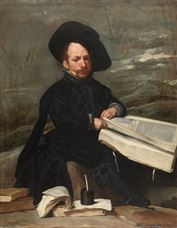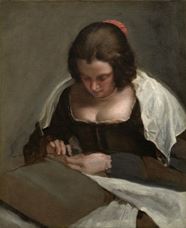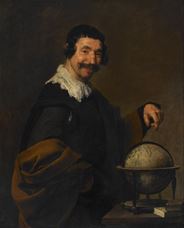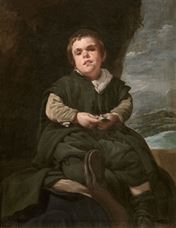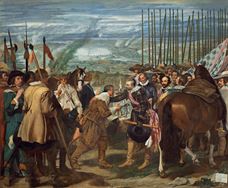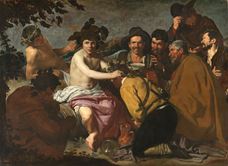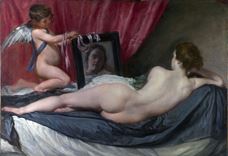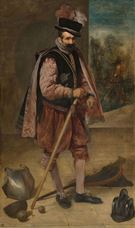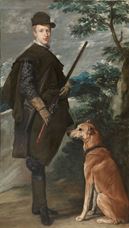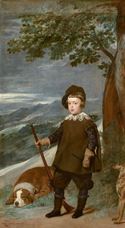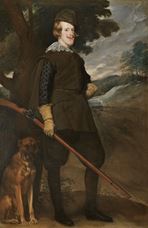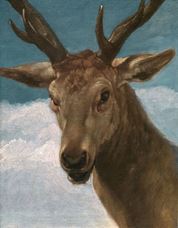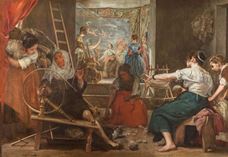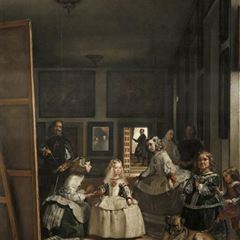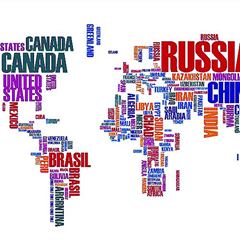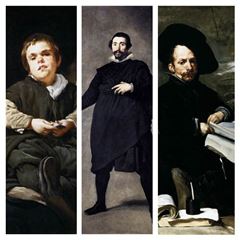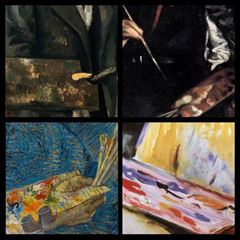Social media and blogger named Gareth EVANS wanted to find out which artists were most searched on google in 2020 in the world during the pandemic process. EVANS showed the most popular artists searched by each country on the world map.
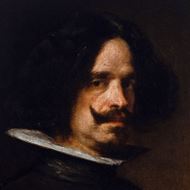
Diego Velázquez
Diego Rodríguez de Silva y Velázquez was born on 6 June 1599 in the city of Seville in Spain. He was the first child of Juan Rodríguez de Silva and Jerónima Velázquez from Andalusian noble families.
At age twelve, Velázquez entered the workshop of Francisco de Herrara, the most famous art teacher in Seville. About a year later, he started working with Francisco Pacheco, who will be his father-in-law in the future. Pacheco was a painter and art theorist with many works on a painting. He was also in close contact with the artists, intellectuals, and nobles of Seville. Pacheco offered Velázquez an independent working environment and paved the way for him to develop an original style.
In 1617 Velázquez was admitted to the Guild of Saint Luke in Seville. He was supposed to be a guild member to open his own workshop, to run auxiliary painters alongside him, and to take orders from the church and the rich. In 1618 he married Pacheco's daughter Juana. The couple's two daughters were born in three years, and only Francisca survived. Velázquez founded his own studio in 1620, where he started working with his apprentices.
Velázquez's first works were pictures of the bodegón style in Spain. Bodegón was a species that depicts people who drink in the tavern, women who cooking at the beginning of the cooker, street vendors, and ordinary people like musicians. These works, hidden by a symbolic expression, have moral and religious sub-meanings. Of the twenty works signed by Velázquez from 1617 to 1622 in Seville, nine were bodegón. All the images he made in the future would be undated and unsigned. At the beginning of the 17th century, the bodegón movement, which directly influenced the European and Spanish artists with its vivid and detailed descriptions, was born with the works of the Italian painter Caravaggio. Although Velázquez had not yet gone to Italy, he was fascinated by the style and inventions of Caravaggio, which he learned from imitator's work. He gave quite a place to Caravaggio's concept of light-shadow in his first paintings. His first masterpiece "The Waterseller of Seville" between 1618-1622 was an example of this approach. Velázquez, in this context, brought together different species for the first time in 1618, in the table of "Christ in the House of Martha and Mary". This painting, which is an example of bodegón, was among the few religious studies. The masterpiece of the mature period, which he also used the painting method in the painting, which was one of the characteristics of this style, gave the highest example of the style with Las Meninas.
Velázquez went to Madrid for the first time in 1622. His aim was to see and study the Escorial Monastery-palace northwest of the capital and the art collection. Due to the short duration of his visit, he was unable to achieve this goal. On his way back, he visited Toledo and Córdoba and made a picture of the famous poet Luis de Góngora of Córdoba.
The new king of Spain Philip IV's chief adviser count Olivares called Velázquez to the palace in 1623 after the death of Rodrigo de Villandrando, one of the palace's favorite painters. Pacheco's good relations with the courtiers and his acquaintance with the Count had played an active role in this invitation. The 24-year-old artist returned to Madrid and became a salaried palace member in the service of the king. He was going to spend the most important years of his art life in the palace. His main task was to make a portrait of Philip IV. He became the only artist authorized to make a portrait of the king as a result of his successful work and he was promoted to the court painter. The mastery of his portraits began to attract the king's attention, and this caused jealousy of other painters at the palace, which saw him as a rival. This caused Philip IV to organize a competition among the palace painters in 1627, and Velázquez won the competition.
In 1628, he met Peter Paul Rubens who came to Madrid for the second time with a diplomatic mission. Rubens, who painted the King, frequently hosted Velázquez in his atelier and a good friendship was established between the two painters.
Velázquez went to Italy for the first time in 1629 to conduct research with the king's permission and assignment. He set out from Barcelona and went to Genoa, Milan, and Venice respectively. He saw the works of Tintoretto and Tiziano in Venice. His next stop was Rome, thought to have gone through Florence. During a year in the Italian capital, he studied the works of Raffaello and Michelangelo. Two small landscapes with an impressionist influence and large-sized canvases such as" Vulcan's Forge" and "Joseph's Tunic" were thought to have been completed in Italy. On his way back to Spain, he met the painter Jusepe de Ribera whom he admired in Napoli. He made the picture of his sister Doña Maria, who was about to marry the King of Hungary, who was in Naples with the request of the King.
Velázquez returned to Spain in 1631. He was commissioned to make a portrait of young prince Baltasar Carlos. Baltasar Carlos, son of Philip IV, had just filled his age and King did not allow any painter to paint the prince until Velázquez returned from his journey.
The construction of the Buen Retiro Palace in Madrid was initiated by Olivares, who held the state administration in this period. Velázquez also participated in a year-long decoration of the new palace's great hall named Salón de Reinos. The paintings adorned here were a series of equestrian portraits, including "Count-Duke of Olivares on Horseback". "Philip IV on Horseback", dated 1635, was the most important part of this series. Among the paintings presented were also Philip IV's parent's paintings on horses. In addition to the horse portraits, the series of war paintings of various painters were also on display. One of the main works in this series was "The Surrender of Breda" the work of Velázquez in 1634-35.
After the completion of Buen Retiro, Philip IV set out to make his next draft. Emperor Carlos V had been built an observation tower, which he used as a resting place for fatigue near Madrid, in the past. Philip IV expanded the tower known as Torre de la Parada and turned it into a hunting lodge. Rubens had been ordered many mythological subjects. After the completion of the hunting pavilion, Velázquez was assigned to organize the paintings to be hung here. The artist had to produce a series of hunting paintings to be hung along with the available paintings and the work of the Dutch masters. Velázquez's hunting scenes, hunter and dwarf paintings, as well as the god of war Mars, Aesop and Menippus portraits were also exhibited here.
Velázquez traveled to Italy in 1649 for the second time. He had bought paintings for the palace collection and had done extensive research on Italian art. He had the opportunity to show his talent with many portraits he made while in Rome. He also portrayed Juan de Pareja, who was an apprentice of his atelier, with a magnificent portrait. One of the most remarkable paintings in Rome was the portrait of Pope Innocent X, one of his masterpieces he completed in 1649-1650. Velázquez, meanwhile, was admitted to the Roman Academy in 1650. In 1651 he returned to Madrid. His new duty is Philip IV's second wife was to paint the portrait of Queen Mariana. He had been appointed lord chamberlain in 1652 due to his architectural consultancy since the mid-1640s. In 1656, one of the most enigmatic paintings of art history, which was reconsidered and interpreted in numerous ways, made his greatest masterpiece, "Las Meninas".
In 1659 Velázquez received the fame of Santiago Knight. He was subjected to years of investigation by the Knights of Santiago to enter the Union. The history of Velázquez and his family was researched and interviewed in many witnesses. After a long investigation into the past of his ancestors, he received the fame of the Santiago Knight by his heartfelt support from the king and his approval by the Pope. In 1660, on a small island on the River Bidassoa on the Spanish-French border, he joined the French King Louis XIV and Infanta Maria's wedding with the Knight's costume. In the same year, he returned to Madrid and continued his routine work. After a short while, he fell ill and fell into bed. He passed away on August 6, 1660.
Bibliography;
Erdoğan, C.E., (2015). Sanatın Büyük Ustaları Velázquez, Birinci Baskı, Hayalperest Yayınevi, İstanbul.
Wolf, N., (2005). Velázquez, Birinci Baskı, Taschen/Remzi Kitabevi, İstanbul.
Yetkin, S.K., (2007). Büyük Ressamlar, Palme Yayıncılık, Ankara.
Altuna, S., (2013). Ünlü Ressamlar Hayatları ve Eserleri, Birinci Baskı, Hayalperest Yayınevi, İstanbul.
Gombrich, E.H., (2002). Sanatın Öyküsü, Üçüncü Baskı, Remzi Kitabevi, İstanbul.
Turani, A., (2010). Dünya Sanat Tarihi, On Dördüncü Baskı, Remzi Kitabevi, İstanbul.
Bell, J., (2009). Sanatın Yeni Tarihi, Birinci Baskı, NTV Yayınları, İstanbul.
1599 He was born on June 6, in the city of Seville in Spain.
1611 He joined the art teacher Francisco de Herrara's workshop. Soon after, he started working in the studio of painter Francisco Pacheco.
1617 He was admitted to the Guild of Saint Luke in Seville. Nine of his dated and autographed paintings in Sevilla until
1622 were bodegón; the others were first portraits and religious paintings. His paintings were left undated and unsigned.
1618 He won a reputation with his paintings such as "An Old Woman Cooking Eggs", "The Immaculate Conception", "The Waterseller of Seville". He married the daughter of master Pacheco.
1622 He went to Madrid for the first time. The painter Rodrigo de Villandrando, the favorite of the palace, died at the end of the year.
1623 Count-duke Olivares, the co-chief and chief advisor of King Philip IV of Spain, called Velázquez to the palace. He was assigned to make a portrait of Philip IV. He was given the privilege of being the only artist authorized to make the portrait of the king and was brought to the painter of the palace.
1627 He won the competition among the palace painters organized by Philip IV.
1628 He met Peter Paul Rubens who came to Madrid for the second time on a diplomatic mission. In this period, "The Triumph of Bacchus" was painted.
1629 Before the first trip to Italy, Genoa to Florence, after staying here for a while, he went to Rome for a year. He also made large-sized canvases such as "Vulcan's Forge" and "Joseph's Tunic". He stopped in Naples during his return trip to Spain.
1631 Velázquez's daughter Francisca married the painter Juan Bautista Martinez del Mazo.
1635 When the flamboyant Salón de Reinos section of the new Buen Retiro palace (Royal Hall) in Madrid was finished, he joined the one-year decoration in addition to the horse portraits exhibited here, one of his main works among the war paintings of various painters, was "The Surrender of Breda".
1636 The hunting lodge Torre de la Parada near Madrid was extended and decorated with paintings from the Rubens workshop. Velázquez's hunting scenes, hunter and dwarf paintings, as well as the war god "Mars", "Aesop" and "Menippus" portraits were also exhibited here.
1649 Velázquez went on a second trip to Italy. Among the many paintings, he made in Rome where the portrait of Pope Innocent X. 1650 He was admitted to the Rome Academy.
1651 He returned to Madrid. Philip IV's second wife was commissioned to make a portrait of Queen Mariana.
1656 He made his greatest masterpiece, "Las Meninas".
1659 Following a long investigation into the past of his ancestors, he received the fame of the Santiago Knight.
1660 He died on August 6 in the Palace of Madrid.
Las Meninas - Diego Velázquez
Diego Velázquez's painting in 1656, "Las Meninas" is one of the most enigma paintings in the history of art. Las Meninas has been reconsidered and interpreted in countless ways. In this picture he depicts a scene in which Velázquez included himself. This unusual painting provides a glimpse of the noble life behind the scene.
Dwarves and Clowns - Diego Velázquez
The Spanish painter Diego Velázquez (1599- 1660) makes a series of paintings which he uses as a figure of dwarves and clowns, whose mission is to entertain the king in order to explain human nature. In these portraits he places the model's head close to the top edge of the canvas. They depict their figures as if they were in a narrow, limited world, crouched in two bending situations. Velázquez had been in the king's servants' classrooms before he became a palace painter. In other words, he was familiar with the figures in which he shared his experiences before starting the paints.
Pallet Self-Portraits of Painters
Self-portraits, which reflect the artist's appearance, personality and mood, bear the characteristics of the environment in which they are made and the environment in which the artist lives. Rembrandt, Van Gogh, Picasso, Munch and Otto Dix have made many self-portraits of famous painters. Each of these self-portraits used unique lines. The connection between the painters' palettes and paintings, the paint on the pallets reveal their personal style and techniques.













